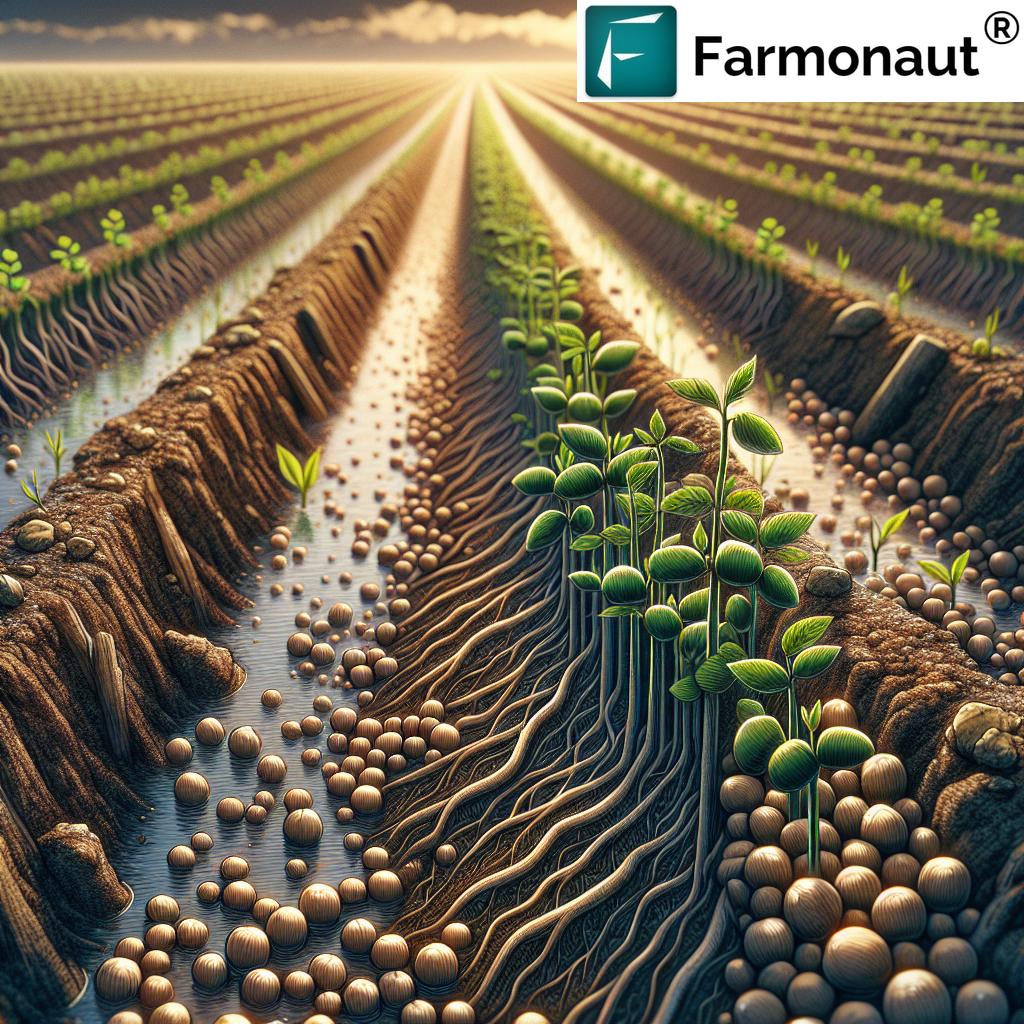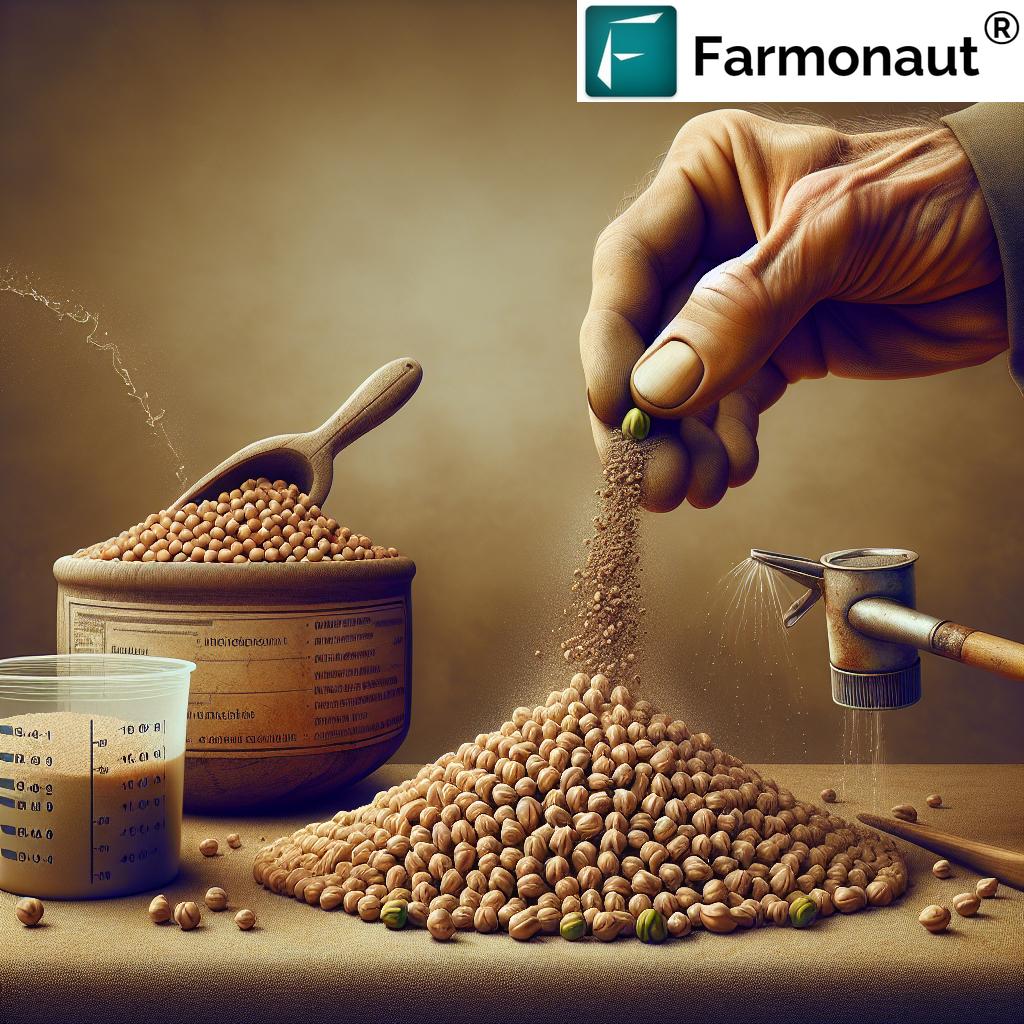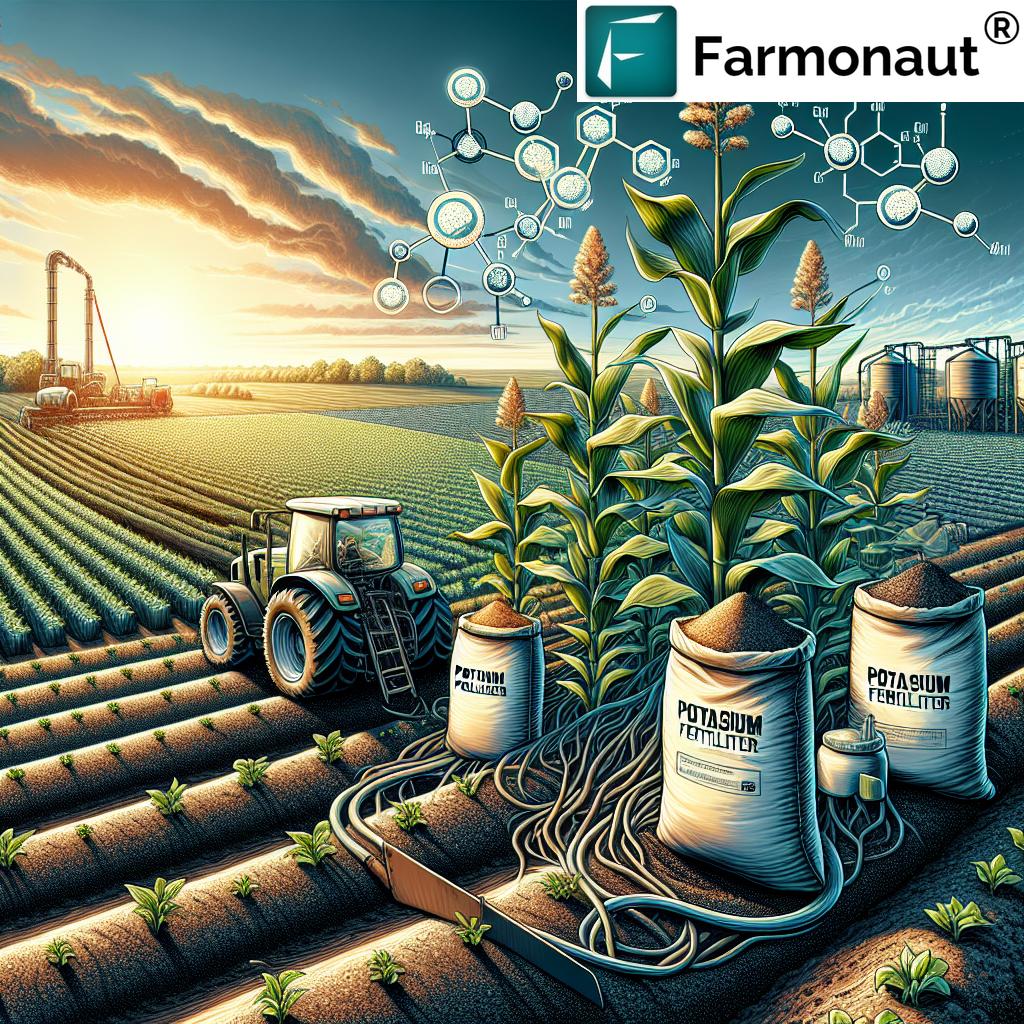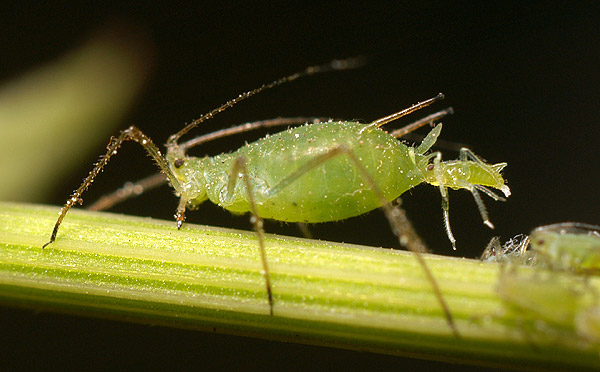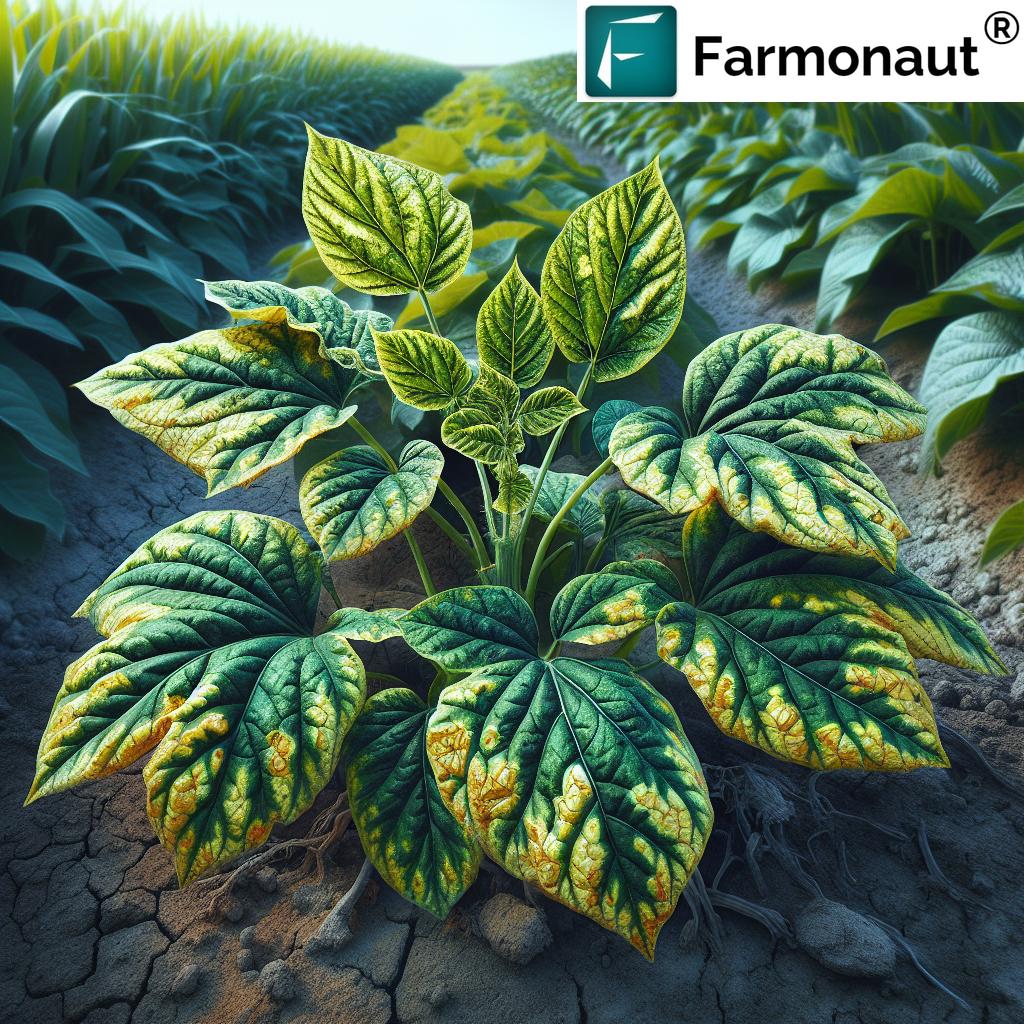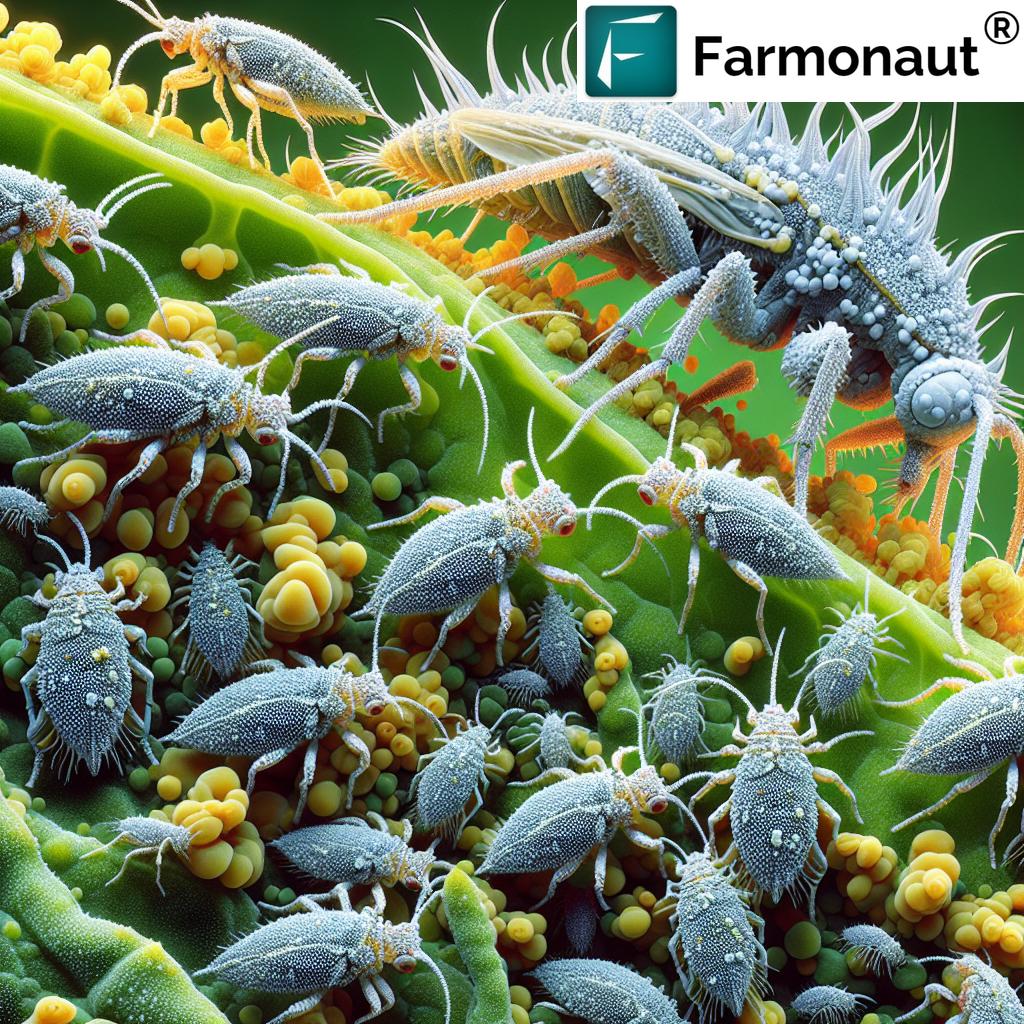Requirements for Planting Chickpeas: 8 Essential Steps Guide
Comprehensive Guide to Planting Chickpeas in Agriculture, Farming, and Forestry
“Chickpeas thrive best in soils with pH 6.0–7.5, ensuring optimal nutrient uptake and healthy plant growth.”
Table of Contents
- Introduction
- Chickpea Cultivation Guide: Overview
- 1. Climate Requirements for Chickpeas
- 2. Optimal Soil Conditions for Chickpeas
- 3. Seed Selection and Chickpea Seed Inoculation Process
- 4. Chickpea Planting Techniques
- 5. Chickpea Water and Irrigation Requirements
- 6. Fertilization Best Practices for Chickpeas
- 7. Pest and Disease Management in Chickpeas
- 8. Chickpea Harvesting Tips and Post-Harvest Management
- Chickpea Planting Requirements Checklist Table
- Maximize Your Chickpea Crop with Farmonaut Innovations
- Frequently Asked Questions (FAQs)
- Conclusion
- Farmonaut Subscriptions
Introduction
Chickpeas (Cicer arietinum), widely recognized as garbanzo beans, stand among the most nutritious and versatile legume crops. As a staple across numerous cultures, the nutritional value of chickpeas supports millions worldwide, making them essential in agriculture, farming, and forestry. Their protein-rich seeds play a vital role in sustainable crop rotations, soil fertility, and balanced diets.
This chickpea cultivation guide is structured for growers, farm managers, agribusinesses, and all stakeholders aiming for optimum yields, embracing the significance of requirements for planting chickpeas. We explore every critical stage, from climate and soil preparation to pest management and harvesting, offering actionable steps grounded in the latest agronomic research.
Chickpea Cultivation Guide: Overview
Chickpeas are cool-season annuals requiring specific conditions for growth and development. Understanding the interplay between climate, soil, seeds, management practices, and technology transforms chickpea farming from a traditional approach to an optimized, sustainable operation.
At Farmonaut, we believe that blending data-driven farm management with time-tested agronomy is the cornerstone for achieving record-breaking yields and ensuring resource efficiency. Our mission is to empower those involved in crop cultivation with technology-powered insights.
Why Chickpea Cultivation?
- High Market Demand: Chickpeas form a critical protein source in vegetarian and vegan diets worldwide.
- Soil Health: As a legume, chickpeas fix atmospheric nitrogen with rhizobium bacteria, enriching soil fertility for subsequent crops.
- Resiliency: With relatively modest water and nutrient requirements, chickpeas thrive in a variety of climates and soil types.
1. Climate Requirements for Chickpeas
Understanding the best climate for growing chickpeas is foundational to strong crop establishment and enhanced yields. Chickpeas are classified as cool-season annuals but with notable frost tolerance at the seedling stage, offering flexibility in sowing windows across diverse regions.
Optimal Chickpea Growing Temperatures
- Daytime: Ideal temperatures range between 70°F–80°F (21°C–26°C). These ranges stimulate rapid growth and healthy root development.
- Nighttime: Consistent readings above 65°F (18°C) promote optimal metabolic activity and boost germination and seedling vigor.
Frost tolerance in early development allows for early planting. However, caution is advised, as late-season frosts can damage mature chickpea plants and significantly reduce final yields. A frost-free season of 90–100 days is typically required for chickpea maturity.
Other climatic requirements include:
- Moderate Rainfall: Excess rain during flowering or pod filling can cause disease outbreaks. Well-timed rainfall or regulated irrigation is preferred over unpredictable monsoon patterns.
- Low Humidity: Chickpeas do best in dry climates with lower humidity, which decreases disease risk, especially of fungal pathogens.
- Sunlight: Full sun exposure supports energy accumulation crucial for pod development and seed filling.
By aligning your sowing calendar with these climatic benchmarks, growers set the stage for healthier plants, better pod set, and higher yields.
2. Optimal Soil Conditions for Chickpeas
Soil texture, pH, organic matter content, and drainage define the foundation for chickpea cultivation. The optimal soil conditions for chickpeas ensure proper germination, root development, and nutrient uptake.
Ideal Soil Types for Chickpea Cultivation
- Sandy Loam and Loamy Soils: These soils offer a balance of good water retention with rapid drainage, maximizing oxygen availability for roots while reducing disease risks.
- Soil Structure: Well-aerated and friable soils promote healthy root systems vital for drought resistance and nutrient foraging.
Heavy, clayey soils should be avoided as they hinder root extension and increase susceptibility to root rot, especially in waterlogged conditions.
Soil pH Range and Preparation
- Optimal pH: Slightly acidic to neutral, in the range of 6.0–7.0 (up to 7.5 is acceptable). This aids optimal nutrient solubility and availability in the rhizosphere.
- Soil Testing: Always test your soil before planting to assess nutrient levels, pH, and detect limiting factors.
- Organic Amendments: Incorporate well-rotted compost or farmyard manure during soil preparation to boost fertility, structure, and beneficial microbial activity.
Drainage is crucial. Flat fields with a gentle slope ensure excess water runs off and minimizes the risk of waterlogging—key to reducing root and stem rot.
Soil Management Best Practices:
- Establish raised beds or broad-based ridges in poorly drained sites.
- Break compacted layers by deep tillage before sowing.
- Perform timely harrowing for uniform seedbed and fine soil tilth optimal for quick germination.
“Seed inoculation can boost chickpea yields by up to 20%, making it a crucial step in cultivation.”
Boost Soil and Crop Productivity with Farmonaut
Our satellite-based crop health monitoring platform (visit Farmonaut app) delivers real-time NDVI, soil moisture analytics, and AI-led crop management recommendations. These insights empower growers to:
- Pinpoint in-field variability in soil moisture, thus optimizing irrigation scheduling for chickpea fields.
- Adapt water and nutrient application according to satellite data, minimizing input costs.
- Detect early stress symptoms, from nutrient deficiencies to pest or disease outbreaks.
Access detailed soil and weather intelligence with our API and developer docs for digital farming innovation.
3. Seed Selection and Chickpea Seed Inoculation Process
One of the most overlooked yet impactful steps in chickpea cultivation is the careful selection of seeds and their effective inoculation. These practices safeguard germination, plant vigor, and even improve nitrogen management.
High-Quality Seed Requirements
- Use certified chickpea seeds that are disease-free and have at least 85% germination rate. Avoid shriveled, fissured, or discolored seeds.
- Select seed types based on your regional suitability: Kabuli chickpeas for large, creamier grains, or Desi chickpeas for small, brown, hardy genotypes.
Chickpea Seed Inoculation Process
- Why Inoculate? Chickpeas form a symbiotic relationship with specific rhizobium bacteria (Mesorhizobium ciceri or M. mediterraneum) to fix atmospheric nitrogen. Inoculation increases nodulation, reducing fertilizer needs while boosting growth and yield.
-
How to Inoculate:
- Coat seeds with recommended rhizobium inoculant just before planting.
- Use an adhesive (e.g., sugar solution) if needed to ensure even coverage.
- Do not expose treated seeds to direct sunlight; plant promptly.
Timely and proper inoculation has been shown to enhance yields by up to 20%, making it a cornerstone for sustainable chickpea farming.
4. Chickpea Planting Techniques
Correct chickpea planting techniques, when combined with the right timing and soil preparation, maximize stand establishment and minimize weed pressure.
Several parameters must be synchronized for optimal results:
- Planting Time: Sow chickpeas in early to mid-April in temperate climates. This leverages the cool, moist spring for early vigor before summer heat stresses plants.
-
Seeding Rate:
- Kabuli types: 125–150 lbs/acre (or 140–170 kg/ha).
- Desi types: 80–100 lbs/acre (or 90–112 kg/ha).
- Aim for a final plant density of 4 plants/sq ft (≈175,000 plants/acre).
- Row Spacing: 6–12 inches (15–30 cm) between rows encourages sunlight penetration, air movement, and reduces fungal disease risk.
- Seeding Depth: Plant seeds 1–2 inches (2.5–5 cm) deep to ensure sufficient moisture and protection from birds or pests.
Adhering to these planting protocols improves germination rates and advances even, healthy crop stands.
If you manage field operations at scale, Farmonaut’s fleet management system (see details) enables seamless machinery allocation, real-time GPS tracking, and reduces operational bottlenecks at planting, spraying, and harvesting times.
5. Chickpea Water and Irrigation Requirements
A crucial step in this chickpea cultivation guide is managing chickpea water and irrigation requirements to avoid both drought stress and waterlogging.
-
Watering Needs: Chickpeas are moderately drought-tolerant, but regular watering is essential during:
- Flowering (when pods begin to set)
- Pod filling (vital for seed size and uniform development)
- Recommended Methods: Drip irrigation is best. It supplies water to the root zone, reducing disease risk and improves efficiency.
- After Planting: Gently water the seedbed post-sowing to enable consistent germination, but avoid over-saturation, which can cause seed rot or inhibit emergence.
- Waterlogging Warning: Never allow soils to become saturated. Root and stem rot pathogens thrive in poorly drained sites.
Use weather forecasts and soil moisture data. At Farmonaut, our real-time soil moisture monitoring—accessible via our app or API—enables site-specific scheduling, reducing water use and supporting yield optimization.
6. Fertilization Best Practices for Chickpeas
Although chickpeas can fix most of their own nitrogen, fertilization for phosphorus and potassium is vital to maximize productivity and metabolic resilience.
- Nitrogen: In fields without prior chickpea crops, moderate starter nitrogen (up to 15–20 kg N/ha) may assist establishment. After nodulation, reduce or eliminate further nitrogen applications.
- Phosphorus (P): Crucial for root development and energy transfer. Apply based on soil test results; typical recommendations: 40–60 kg P₂O₅/ha.
- Potassium (K): Supports water regulation and pod filling; standard rates are 40–60 kg K₂O/ha unless soil test indicates sufficient levels.
- Fertilizer Application: Place P and K fertilizers at or near the seed row but avoid contact with the seed to prevent germination injury.
Avoid excess nitrogen, as this can result in rampant vegetative growth, delayed maturity, and ultimately reduced pod set and yield.
Our Farmonaut platform analyzes vegetation responses to fertilization, using satellite imagery to detect nutrient deficiencies before visual symptoms. For sustainable farming, consider our carbon footprinting tools to monitor and minimize the environmental impact of fertilization protocols.
7. Pest and Disease Management in Chickpeas
Implementing robust pest and disease management in chickpeas is essential to protecting profits and minimizing crop losses. Key threats to monitor:
Common Chickpea Pests
- Aphids and Thrips: These sap-sucking insects cause stunted growth, curled leaves, and can transmit viral diseases.
- Pod Borers: Caterpillars that bore into pods, directly reducing seed yield and quality.
Integrated management practices include timely field scouting, using yellow sticky traps, and spot insecticide application when thresholds are breached.
Major Chickpea Diseases and Solutions
- Ascochyta Blight (Ascochyta rabiei): Presents as necrotic spots on leaves, stems, and pods. Rotating crops and planting disease-resistant varieties substantially reduce incidence.
- Fusarium Wilt: Causes wilting and yellowing from the base upwards. Remedied with clean seed, multi-year rotation, and sanitary field practices.
Farmonaut’s satellite-based monitoring tools offer early detection of stressed crop zones before visible symptoms appear, allowing timely interventions. Blockchain-based traceability (explore our solution) documents all interventions, ensuring transparent, safe produce for buyers.
8. Chickpea Harvesting Tips and Post-Harvest Management
Proper harvest timing and post-harvest practices are key to preserving the nutritional value of chickpeas and maximizing farm profits.
- Harvest Timing: Chickpeas mature 90–100 days after sowing, varying by variety and growing conditions. Harvest when pods turn yellow-brown and start to dry, and leaves have mostly dropped.
- Desiccation: Under humid conditions or uneven crop maturation, desiccants may be used if permitted, but natural drying is preferable.
- Harvesting Conditions: Undertake harvest during dry weather only. Wet or humid harvests lead to increased risks of seed discoloration, mold, and storage losses.
-
Post-Harvest:
- Remove field trash and dry the seeds to 8–10% moisture.
- Clean and grade seeds before storage to deter pests and maintain seed quality.
- Store in cool, dry, and well-ventilated facilities, using airtight or pest-resistant containers as feasible.
Efficient post-harvest management preserves seed quality for both consumption and the next planting season.
Chickpea Planting Requirements Checklist Table
| Step (No. & Name) | Requirement/Action | Estimated Quantity/Range | Purpose/Benefit | Notes/Best Practices |
|---|---|---|---|---|
| 1. Climate Requirements | Ensure suitable temperature, frost-free period, and sunlight | 21–26°C daytime, >18°C nighttime; 90–100 days frost-free | Optimal germination, growth, and pod development | Early planting avoids late-season frost damage |
| 2. Soil Conditions | Prepare well-draining, fertile soil; test pH and nutrients | Sandy/loam; pH 6–7.5; add 5–10 tons/ha organic compost | Healthy root growth, nutrient availability, minimized disease risk | Avoid heavy clay soils; ensure field slope for drainage |
| 3. Seed Selection & Inoculation | Use certified, high-germination seeds; apply rhizobium inoculant | >85% germination; 10g inoculant/1kg seed | Vigorous stands, increased nitrogen fixation, up to 20% yield boost | Inoculate just before planting; avoid sunlight exposure |
| 4. Planting Techniques | Sow at right time, rate, depth, and spacing | Kabuli: 125–150 lbs/acre; Desi: 80–100 lbs/acre; Depth: 1–2 in; Row: 6–12 in | Uniform emergence, minimized weed competition, optimal population | Adjust sowing timing to local weather patterns |
| 5. Watering & Irrigation | Provide water during flowering and pod filling | ~350–400 mm/season; avoid standing water | Improved pod filling, seed size, and yield | Drip recommended; monitor with soil moisture tools |
| 6. Fertilization | Supplement P, K; minimize N input post-nodulation | P: 40–60 kg/ha; K: 40–60 kg/ha | Strong rooting, pod setting, balanced growth | Base rates on soil test; do not mix directly with seeds |
| 7. Pest & Disease Management | Scout, rotate crops, use resistant varieties, apply controls as needed | Use products as per local extension advice | Reduced crop loss, higher quality yield | Maintain sanitation; leverage crop health monitoring platforms |
| 8. Harvesting & Post-Harvest | Harvest at maturity, dry seeds, store safely | 90–100 days from sowing; seed moisture: 8–10% | Preserves quality, minimizes spoilage and loss | Harvest during dry weather; store in airtight containers |
Maximize Your Chickpea Crop with Farmonaut Innovations
At Farmonaut, it’s our vision to make precision agriculture and data-led crop management affordable and accessible for all involved in farming, agriculture, and forestry. Our advanced platform, accessible via Android, iOS, web app, and API, delivers actionable insights on crop health, soil moisture, weather, and pest conditions in real time. These technologies empower farmers to:
- Optimize chickpea watering and irrigation for maximum efficiency
- Precisely time fertilizer and pest application for best results
- Monitor field operations at scale—see large-scale farm management
- Enhance supply chain reliability with blockchain-based traceability—trace chickpeas from field to plate
- Reduce environmental impact through carbon footprint analysis
- Simplify price risk and insurance decisions via satellite-based verification for crop loans and insurance
Discover the benefits for your business—access our APIs for crop analytics and integrate them into your own platforms. Our flexible subscription model allows individual farmers, agribusinesses, and government programs to implement sustainable solutions at any scale.
Ready to unlock smarter chickpea cultivation?
Experience satellite-powered crop, plantation, and forest advisory on the Farmonaut App.
Frequently Asked Questions (FAQs)
What is the best climate for growing chickpeas?
Chickpeas thrive in cool-season conditions, with daytime temperatures of 21–26°C and a frost-free growing season of about 90–100 days. Early planting can utilize the seedling’s frost tolerance, but mature crops should not be exposed to frost.
How do I prepare soil for chickpea cultivation?
The optimal soil conditions for chickpeas require sandy loam or loamy soils, a pH range of 6.0–7.5, good internal drainage, and organic matter amendment. Always perform a soil test to guide your conditioning.
Why is seed inoculation important for chickpeas?
Seed inoculation with specific rhizobium strains boosts nitrogen fixation, improves yields by up to 20%, and minimizes the need for synthetic nitrogen fertilizers.
What’s the recommended seeding rate for chickpeas?
A general seeding rate is 125–150 lbs/acre for Kabuli and 80–100 lbs/acre for Desi types, ensuring final plant populations around 175,000 plants/acre.
When and how should chickpeas be watered?
Water immediately after planting for good germination. Provide additional irrigation at flowering and pod-filling stages, using drip methods for efficiency and reduced disease risk.
How do I manage pests and diseases in chickpeas?
Practice field scouting, rotate crops, plant disease-resistant varieties, and implement timely interventions if pests or diseases are detected.
How do I know when to harvest chickpeas?
Harvest when the crop turns yellow and most pods are dry, typically 90–100 days after sowing. Always harvest during dry weather to prevent seed quality deterioration.
What are the storage recommendations post-harvest?
Dry seeds to 8–10% moisture, clean and grade, and store in cool, dry, pest-resistant containers to maintain quality and viability.
Conclusion
The key to successful chickpea farming lies in a precise understanding of the requirements for planting chickpeas at each phase—from choosing the right variety and preparing soils, to adopting effective planting techniques, optimizing watering, and embracing new digital management practices. Modern agriculture is transforming, and with platforms like Farmonaut, growers gain unique, actionable insights for every step—enabling higher yields, lower costs, and sustainable success in chickpea cultivation.
Whether you are a smallholder farmer, an agribusiness, or part of a governmental program, integrating these 8 essential steps guide with next-generation farm management technology ensures you maximize profit, minimize risk, and cultivate a future-ready operation.
Farmonaut Subscriptions
Ready to leverage the power of satellite-driven insights and precision farming? Check our transparent, flexible subscription options and get started with Farmonaut today.


